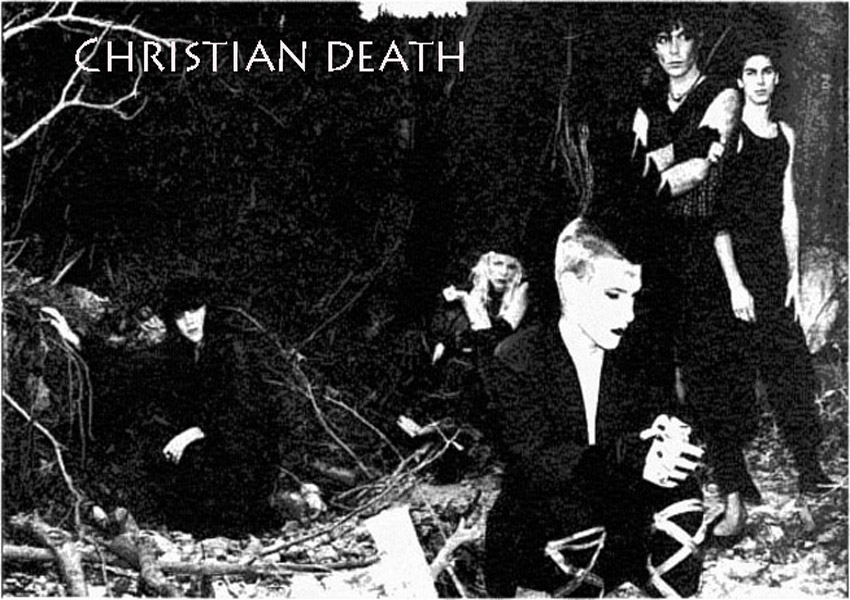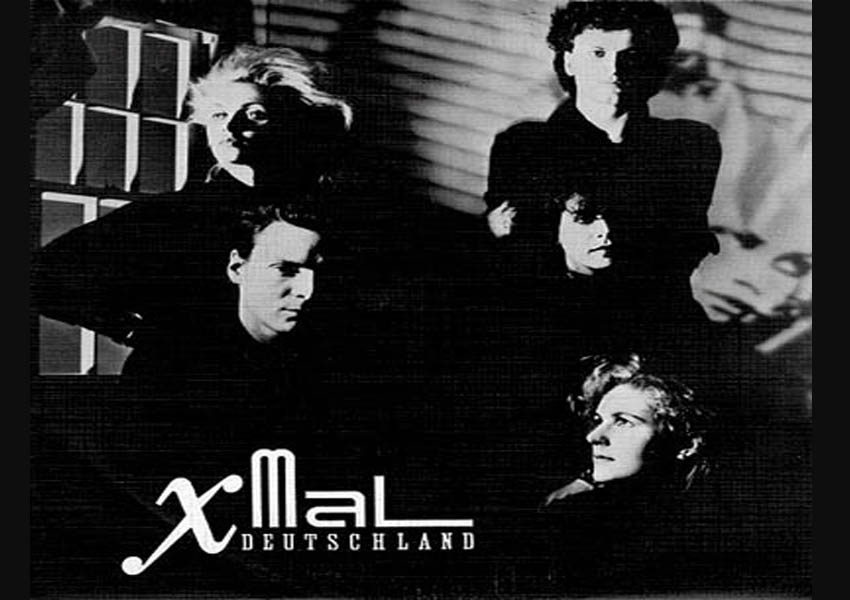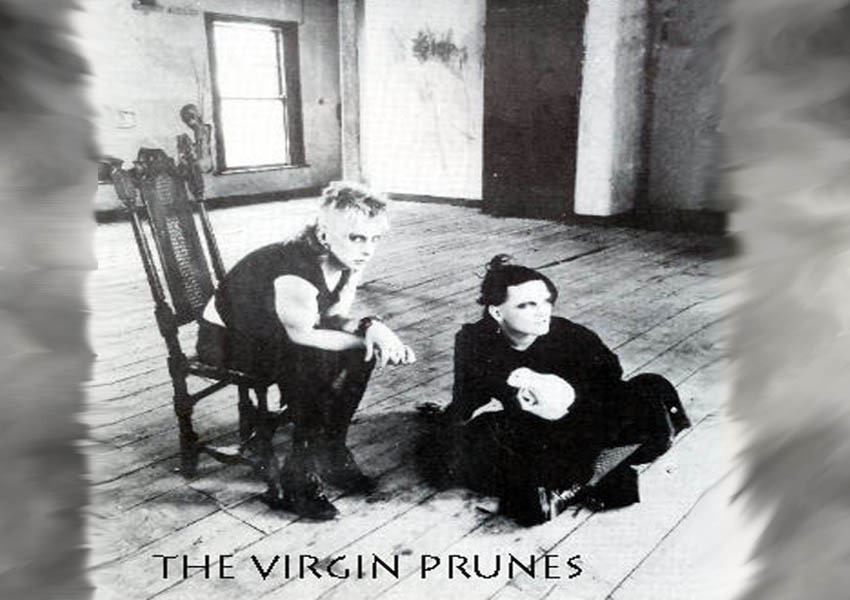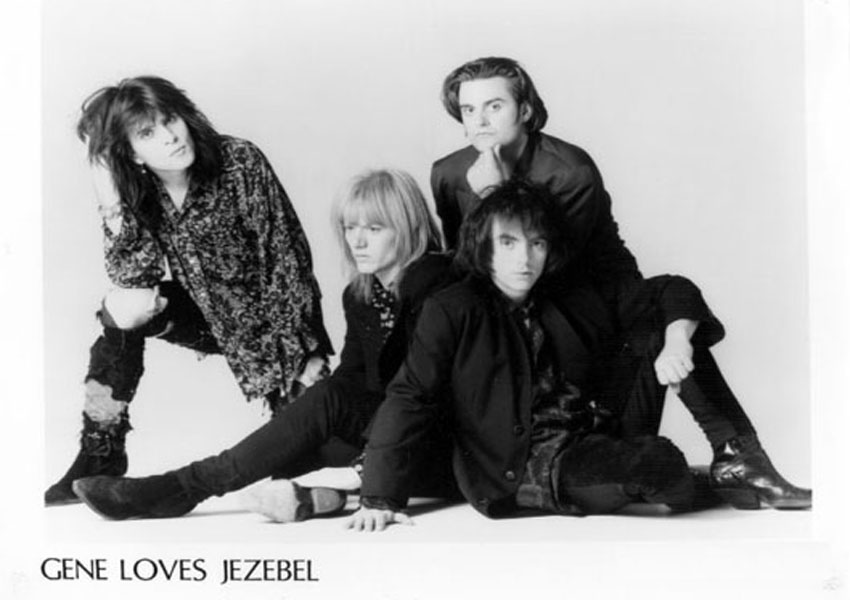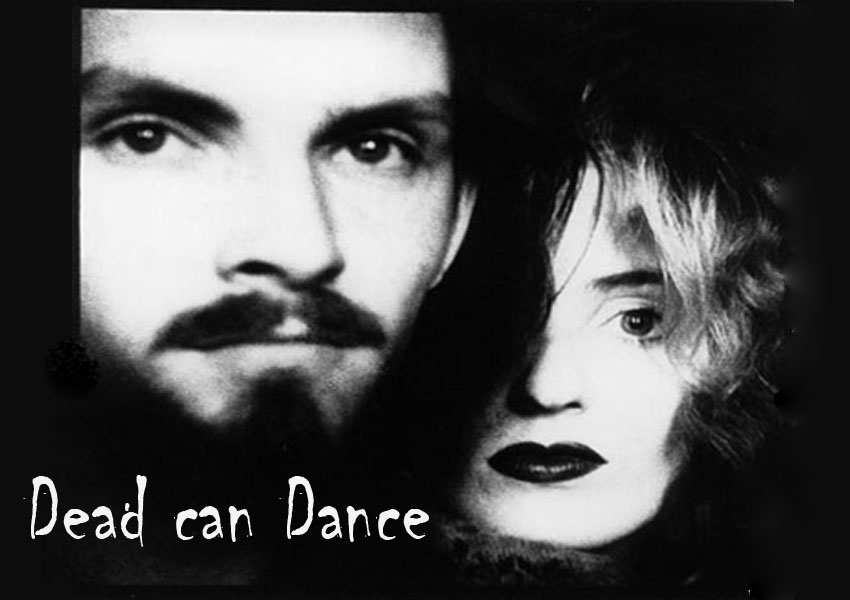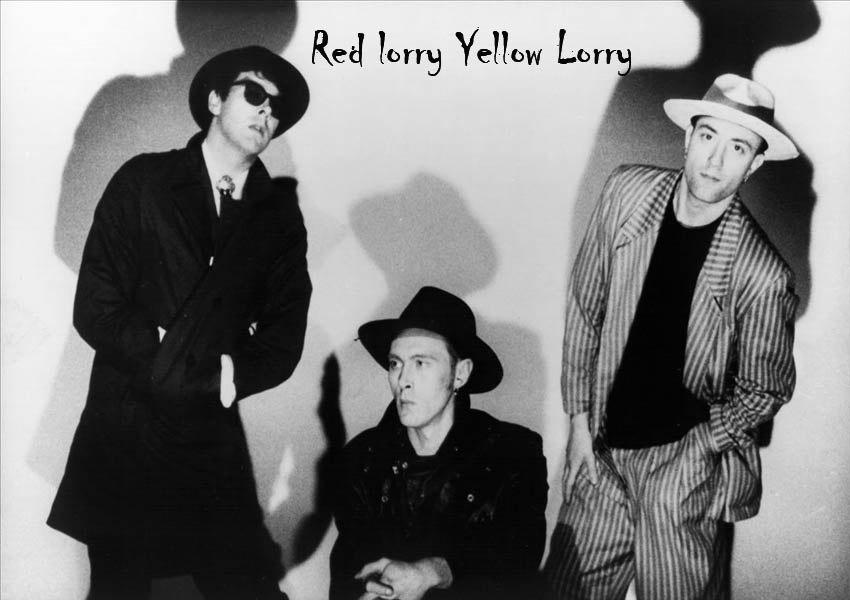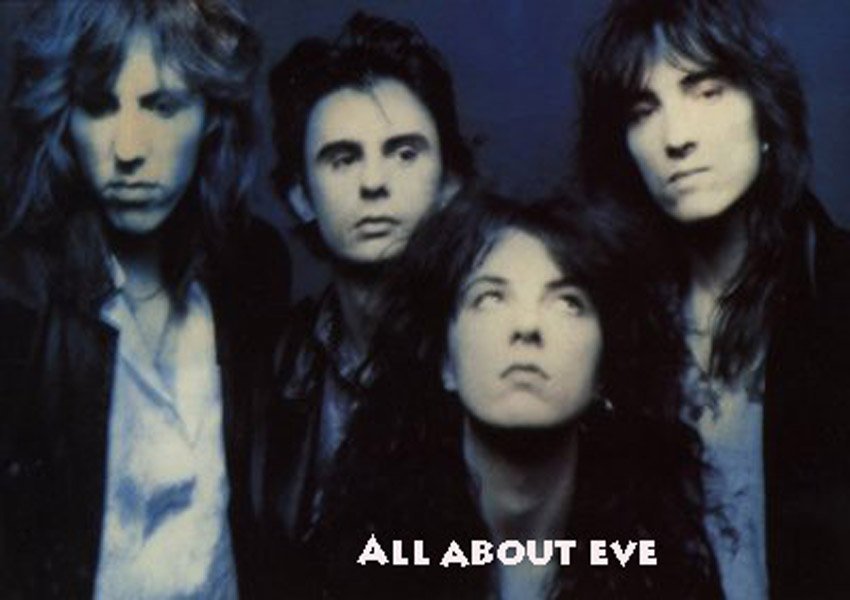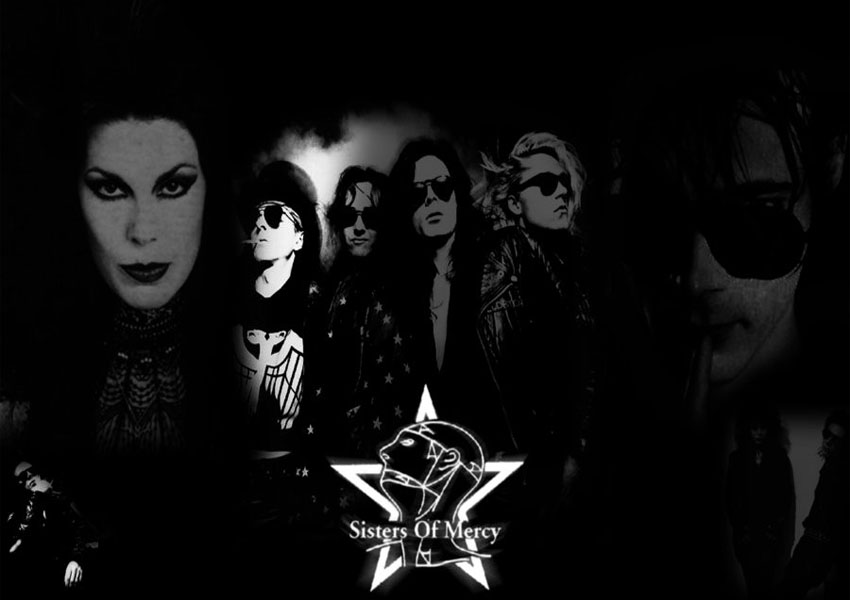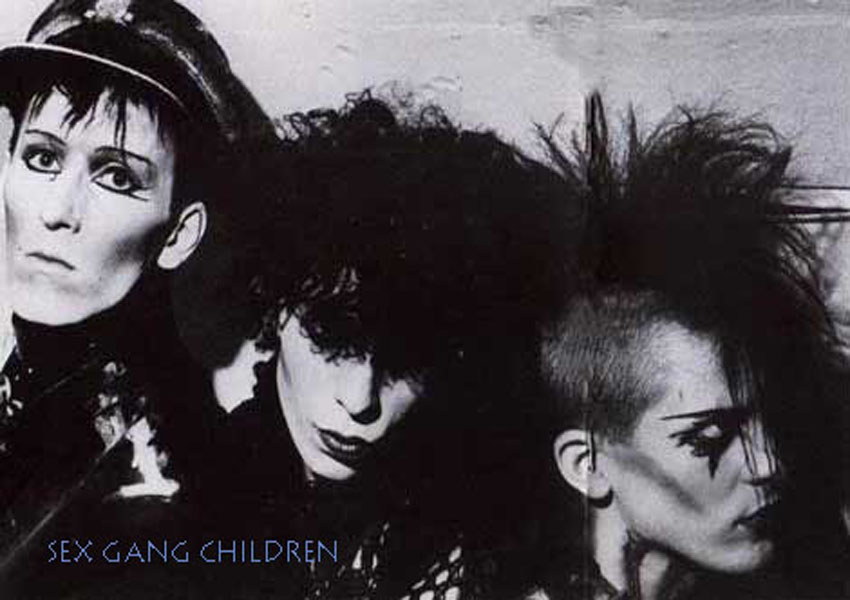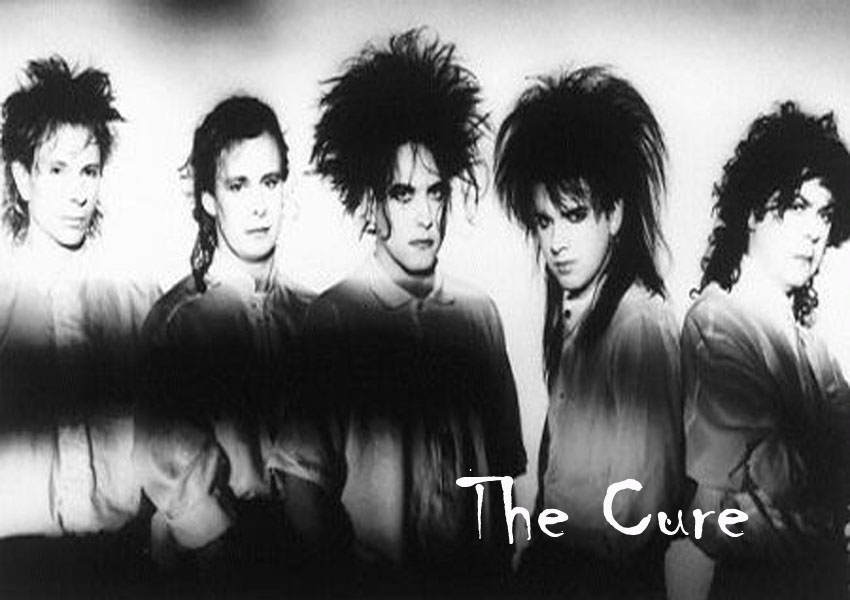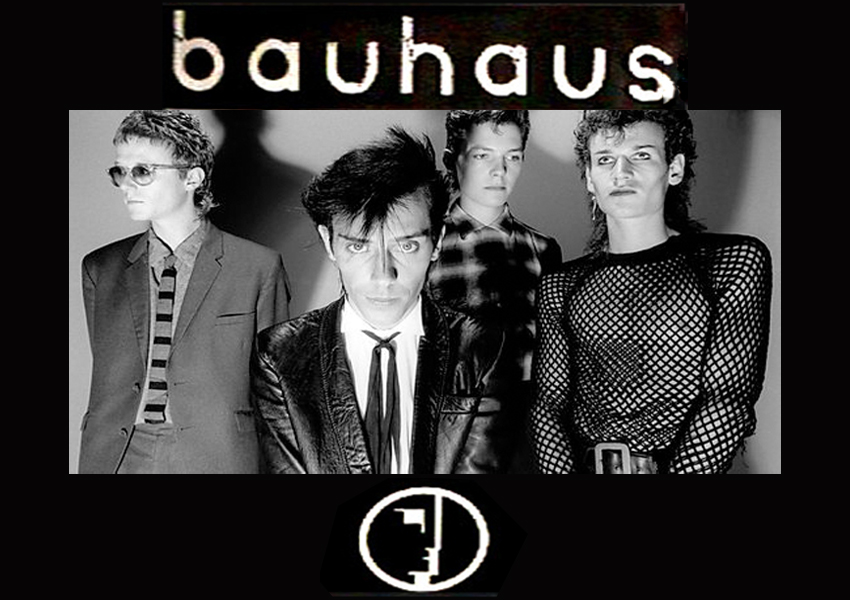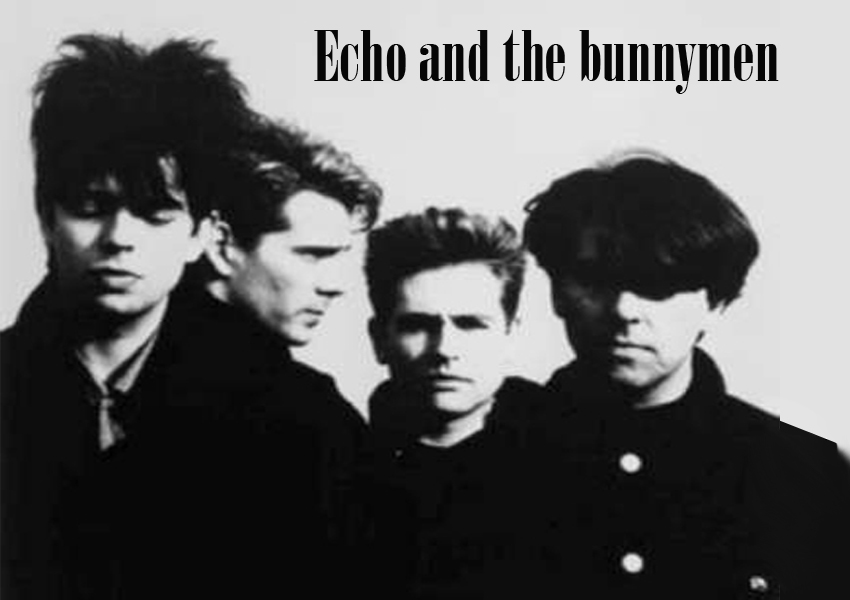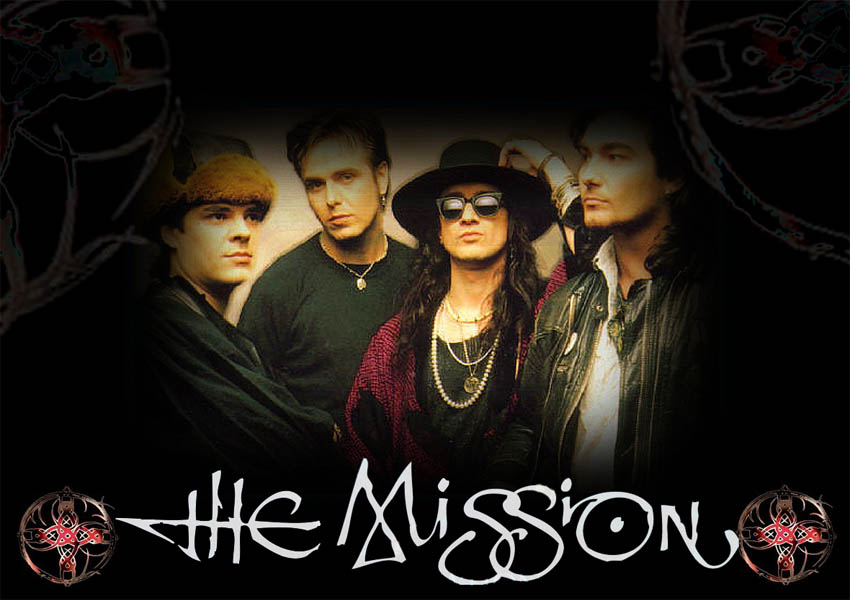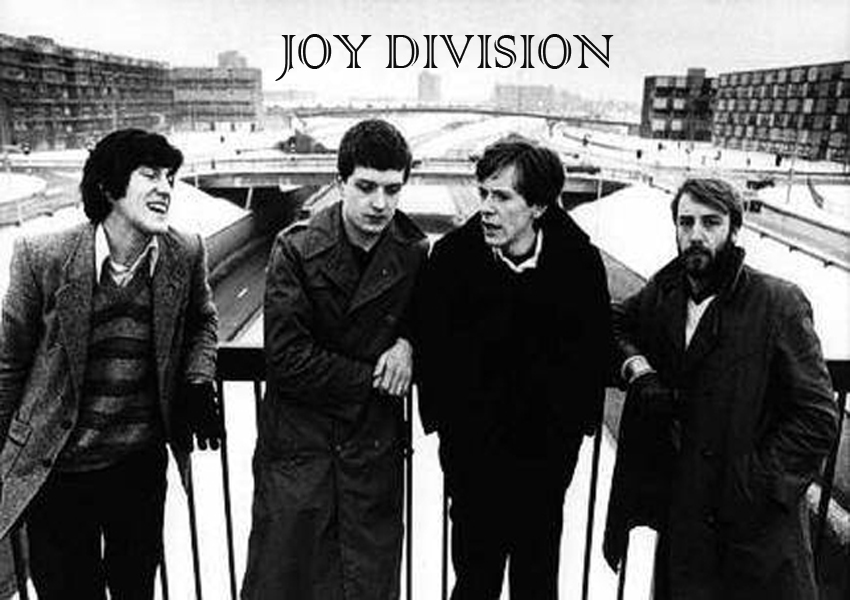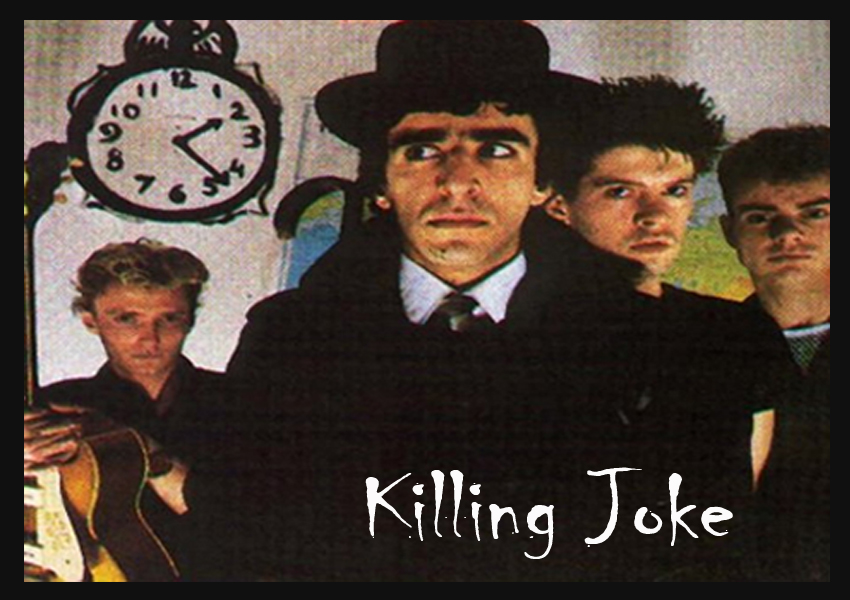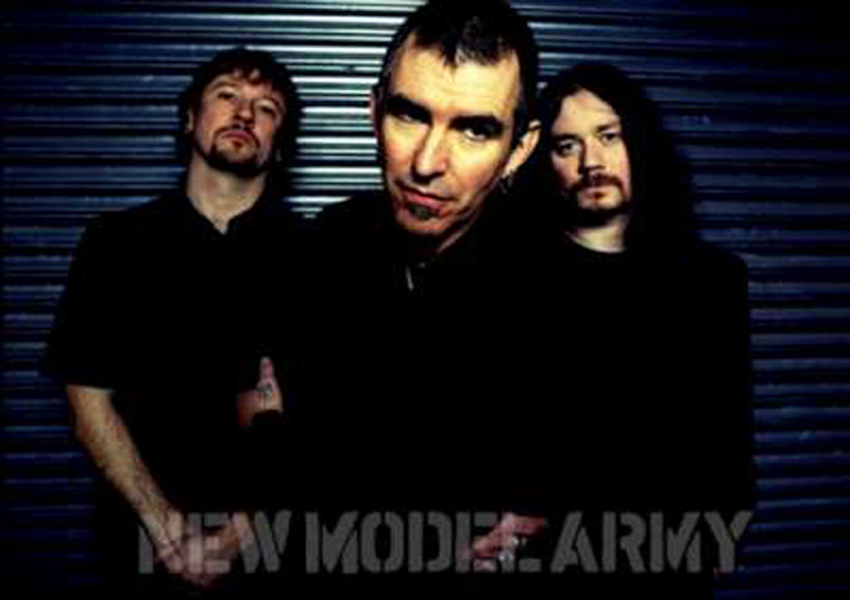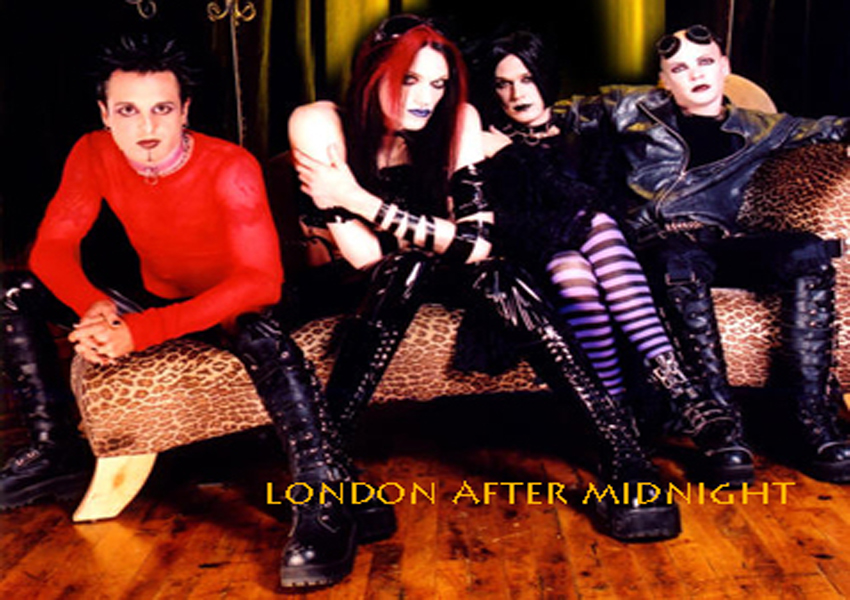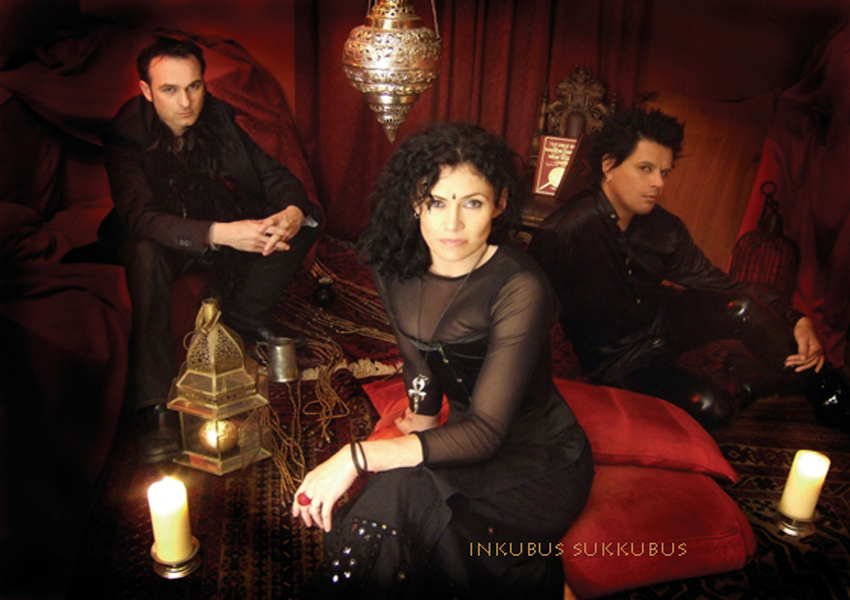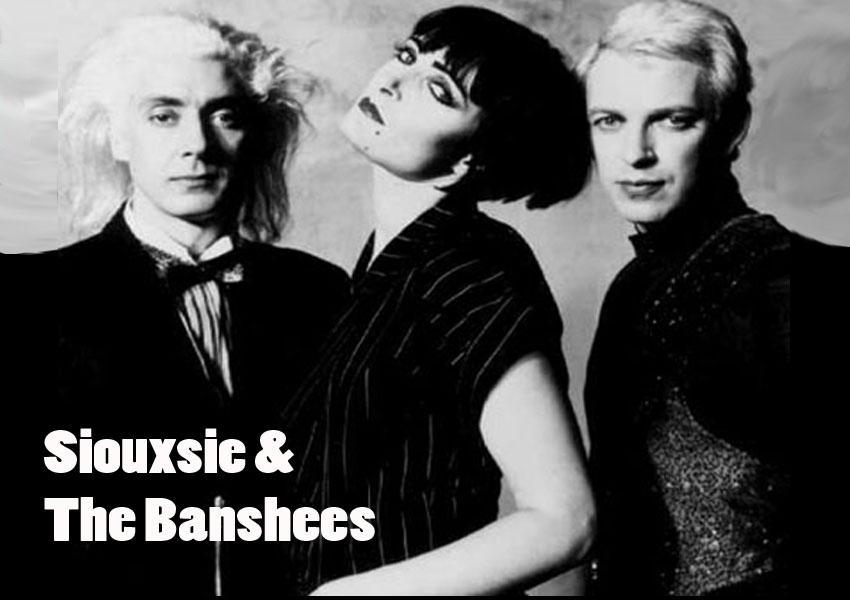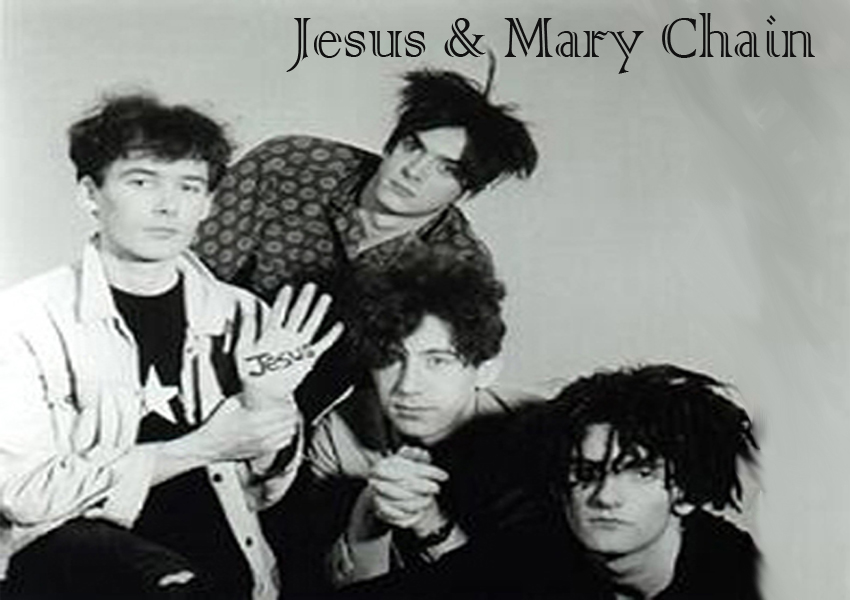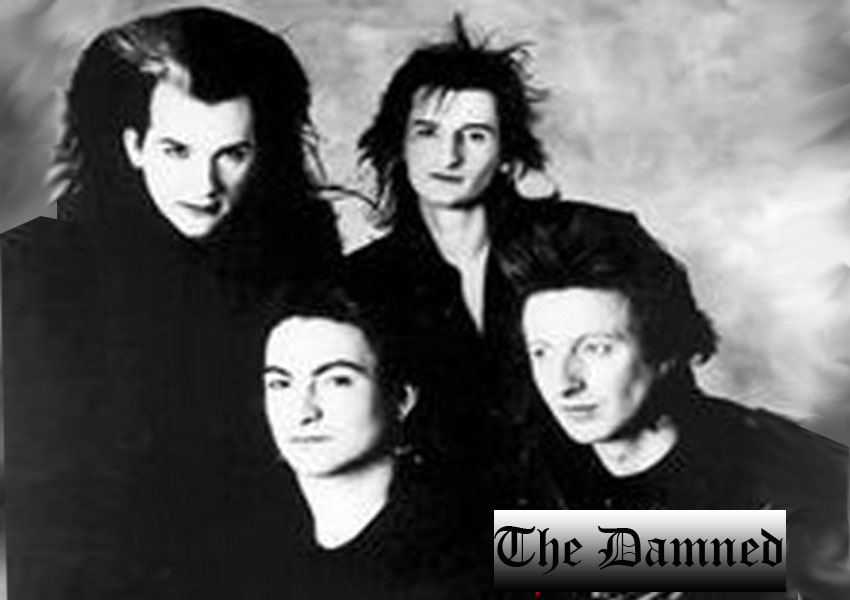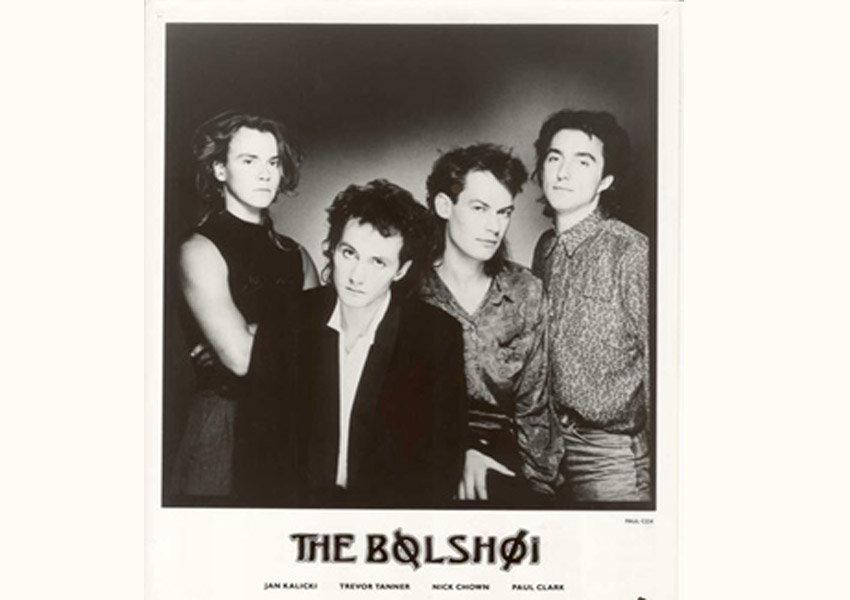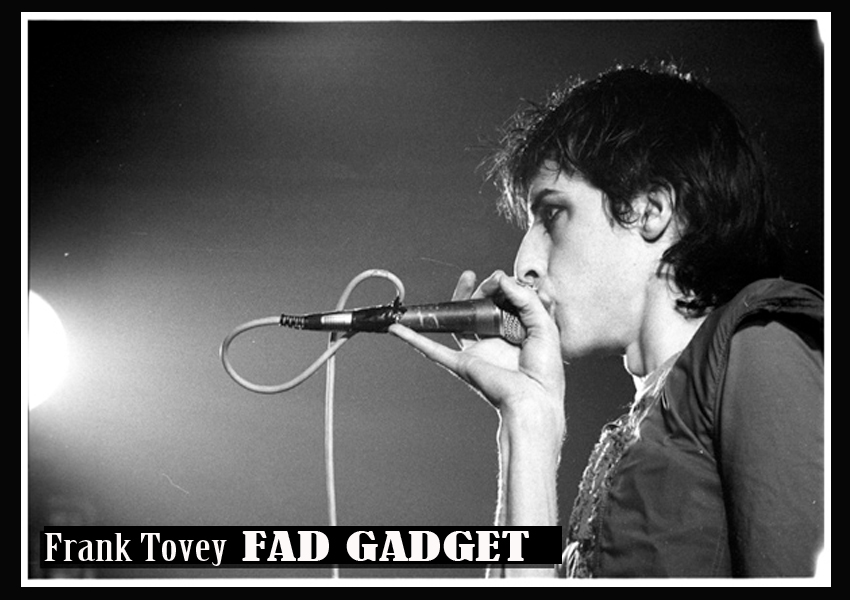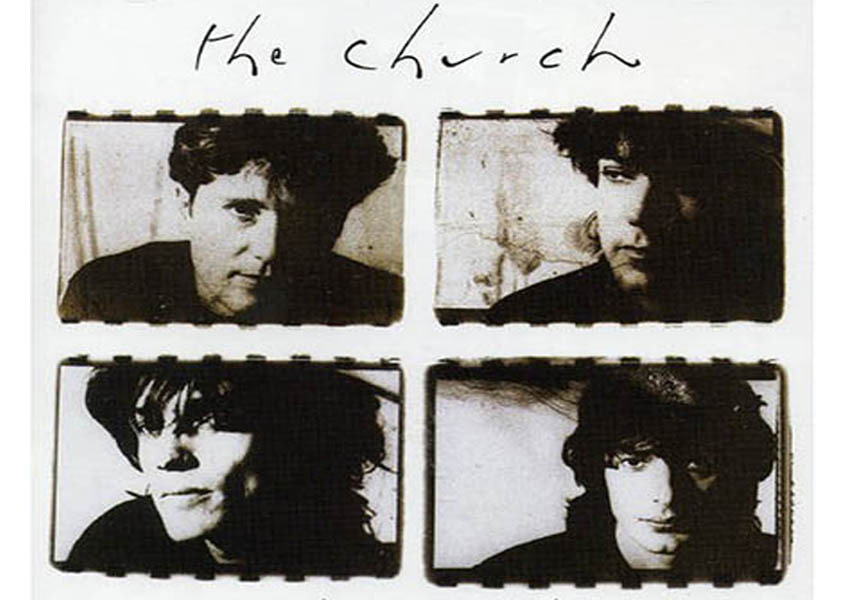Deathrock, Darkwave, Gothic Rock & Post Punk……… |
Deathrock & Darkwave…..Click for Info
These early West Coast deathrock bands took the pre-existing base of punk rock and added dark yet playful themes borrowed from horror movies, film noir, surrealism, religious imagery, etc. A couple of bands blended hardcore punk with a gothic sound, most notably T.S.O.L. and Burning Image.
These early post-punk deathrock bands were not immediately identified as part of a new subgenre of punk; they were simply considered a darker flavor of punk and were not yet considered part of a separate musical movement. During this time, these bands would play at the same venues as punk, hardcore and new wave bands. A similar situation arose in New York circa 1978-79, albeit on a much smaller scale, in which influential punk rock bands like The Cramps and The Misfits, as well as The Mad (fronted by future horror-film effects artist Screaming Mad George) had incorporated extensive horror themes into their lyrics, visuals, and stage show, though they did not use the term “deathrock” to describe themselves.
Around the same time as deathrock was emerging as a distinctively darker subgenre of punk rock in the United States, other subgenres of punk and post-punk were developing independently in the UK.
By 1982, a wave of darker, more tribal post-punk bands had coalesced, influenced by punk rock, and the first-generation post-punk bands like Joy Division, Siouxsie and the Banshees and Bauhaus (and specifically the noisier 1980-81 post-punks UK Decay, Killing Joke, and Theatre of Hate). The primary bands in this new movement were Sex Gang Children and Southern Death Cult. Along with Brigandage, Blood and Roses, Ritual, and others, they were dubbed “positive punk” by the UK press to differentiate them from other bands who were attempting to fly under the punk banner, such as the UK 82 and Oi! acts. These positive punk bands featured tribal drumming, high-pitched vocals, scratchy guitar, and bass as melodic lead instrument, and a visual look blending glam with Native American-influenced warpaint and spiky haircuts, the first generation of the UK’s post-punk goth bands. Other related bands like Ausgang, Inca Babies, and Bone Orchard shared much of the tribal ethos and spiky look, but took more inspiration from The Birthday Party.
During 1983, a related movement was brewing at a London gothic rock club called the Batcave. Initially envisioned as a venue specializing in glam rock and new wave musical acts, the two main bands which debuted and performed frequently at the Batcave, Specimen and Alien Sex Fiend, developed their own different sounds strongly influenced by horror in British pop culture, which set them apart from the rest of the glam and post-punk scenes in Britain. Also in 1983, Gun Club toured in Europe as did Christian Death which meant the European gothic rock scene and the American deathrock scene were now able to directly influence one another.
By 1984, the term “positive punk” was outdated, and the tribal positive punk bands, the various bands from the Batcave scene, as well as the bands from Leeds (such as The Sisters of Mercy,[30] The March Violets, Red Lorry Yellow Lorry, and others) some of which used drum machines, had all come to be referred to as “gothic” or gothic rock. The same year, California deathrock band Kommunity FK toured with UK gothic rock band Sex Gang Children (and the following year with Alien Sex Fiend which continued the trend in which American and British movements intermixed. Influenced more by the British scene and less by California, deathrock bands began to form in other parts of the United States, such as Samhain (1983) in Lodi, New Jersey, Gargoyle Sox (1985) in Detroit, Michigan, Shadow of Fear (1985) in Cleveland, Ohio, and Holy Cow (1984) in Boston, Massachusetts (and later Providence, Rhode Island). The fertile New York scene featured Scarecrow (1983), Of a Mesh (1983), Chop Shop (1984), Fahrenheit 451 (1984), The Naked and the Dead (1985), Brain Eaters (1986), The Children’s Zoo (1986), The Plague (1987), and The Ochrana (1987).
The mid-1980s marked the second wave of gothic rock, when the sound began to shift away from its punk and post-punk roots and towards the more serious, rock-oriented approach. Bauhaus broke up, Rozz Williams left Christian Death, and the Sisters of Mercy became the dominant and most influential gothic act. The term “gothic rock” became preferred over “deathrock” (previously, they had been used interchangeably), a change which Rozz Williams attributed to the influence of the Sisters of Mercy. As a result, the term “deathrock” was seldom used except in retrospective reference to the Los Angeles bands 45 Grave and Christian Death.
The mid-1990s marked a so-called “third wave of gothic rock,” as the music drifted its furthest from the original punk and post-punk sound by incorporating many elements of theindustrial music scene at the time (which itself had moved away from experimental noise and into a more dance-rock oriented sound) and the more repetitive and electronic sounds of EBM.Some clubs even completely dropped deathrock and first generation gothic rock from their setlists to appeal to a crossover crowd. These changes alienated many in the goth scene who preferred the livelier, punkier deathrock sound and led them to seek out their earlier deathrock roots.
The deathrock revival movement was similar to the original deathrock scene in Los Angeles and the Batcave movement in London, but more unified in the US, UK, and Europe through various record labels. In addition to clubs, the revival scene was centered around concerts, special events, parties, and horror movie screenings. The Internet played a major role in the deathrock revival. Websites and online communities sprang up devoted to the discussion of deathrock music, bands and fashions as well as horror movies.
In terms of differences from the original scene, there was a shift to a more post-punk sound as a result of the influence of the European bands of the 1980s. Also, the apolitical influence of psychobilly discouraged political debates with the potential to fragment the scene (however some famous deathrock acts, such as Rudimentary Peni, were originallyanarcho-punk bands, and there existed some slight crossover between the two scenes). The Drop Dead Festival, similar to psychobilly’s Hootenanny, gave bands with smaller fan bases an opportunity to play before larger crowds.
Only Theatre of Pain, Christian Death’s 1982 debut album, is widely held as the first American gothic album and cannot be easily classified as either a darker flavor of punk, horror punk, or gothic rock. As a result, Rozz Williams, the deceased lead singer of Christian Death, Shadow Project, Premature Ejaculation, etc. was considered one of the most influential artists in the goth and deathrock scene. Patrick Mata of Kommunity FK is another influential male deathrocker, as is Larry Rainwater of Ex-VoTo.
Dinah Cancer has been referred to as the “Queen of Deathrock”, the “Goddess of Deathrock” and the “High Priestess of Deathrock” for her role as the frontwoman for 45 Grave during a time when female lead singers were still considered somewhat of a rarity. Other influential female deathrockers include Eva O and Voodoo Church’s Tina Winter.
Many artists in the United States released EPs and LPs prior to 1982 which would now be considered deathrock, such as the previously mentioned Theatre of Ice and Mighty Sphincter. British bands also made major contributions to the deathrock sound by adding a strong post-punk influence, including Joy Division, Bauhaus and Siouxsie and the Banshees.Other bands from around the world added their own unique contribution to deathrock, including Xmal Deutschland in Germany, Virgin Prunes from Ireland, and the Birthday Party in Australia.
However, the Sisters of Mercy, who are frequently played at deathrock clubs, are generally not considered to be a deathrock band, as the most prominent example of their sound,Floodland, has more in common with second-wave gothic rock bands (as they were the second wave’s prime influence).
Gothic Rock……Click for Info
Frequently misunderstood in its aesthetics and misapplied as a term, goth rock is an offshoot of post-punk that existed primarily during the early to mid-’80s. Its reputation as the darkest and gloomiest form of underground rock is largely deserved, though today that reputation stems more from the visual theatricality of its bands and black-clad followers. Sonically, goth rock took the cold synthesizers and processed guitars of post-punk and used them to construct foreboding, sorrowful, often epic soundscapes.
Early on, its lyrics were usually introspective and intensely personal, but its poetic sensibilities soon led to a taste for literary romanticism, morbidity, religious symbolism, and/or supernatural mysticism. Goth rock was generally not a critically acclaimed style, given its penchant for florid poetry, relentlessly mournful dirges, and melodramatic excess.
However, it spawned a devoted, still-thriving subculture that kept its aesthetics alive long after the music’s initial heyday had passed. The godfathers of goth-rock were British post-punkers Joy Division, whose bleak, remote, obsessively introspective music and lyrics laid the initial foundation for goth. But for all intents and purposes, the true birth of goth rock was “Bela Lugosi’s Dead,” the 1979 debut single by Bauhaus. Already chilly post-punk outfits like the Cure and Siouxsie & the Banshees became full-on goth bands around the same time, and their heavy, menacing makeup and dark clothes became an important part of their fans’ expression. As goth rock’s popularity spread among a certain segment of sensitive, alienated youth (first in the U.K., where most of its bands came from, then in the U.S.), its fashion sense grew more and more outlandish, and the original sound evolved somewhat. The Cure, Siouxsie & the Banshees, and the Mission UK incorporated more pop and alternative elements in their music, while the Sisters of Mercy, Fields of the Nephilim, and the American band Christian Death took a heavier, sometimes metal-influenced approach.
By the end of the ’80s, the original goth-rock movement had ceased to exist, but the music mutated into new forms and continued to influence many of rock’s darker subgenres.
During the ’90s, the goth sound began to cross-pollinate with industrial music, producing hybrids that appealed to both sides, as well as the darkwave subgenre (which also incorporated ’80s synth-pop and dream-pop). The latter half of the ’90s also saw goth rock’s influence cropping up all over heavy metal; a new breed of progressive black metal bands drew heavily from goth’s sound and style, while some alternative metal bands also borrowed from goth rock’s visual imagery.
Post punk…..Click for Info
After the punk revolution of 1977, a number of bands inspired by the d.i.y. spirit and raw sound of punk were formed. However, instead of replicating the sound of the Sex Pistols, many of these bands forged into more experimental territory, taking cues from a range of artists and styles, such as Roxy Music, David Bowie (especially Low, Heroes and Lodger), disco, dub and Krautrock. The result was Post-Punk, a more adventurous and arty form of punk, no less angry or political but often more musically complex and diverse. Many of these groups — like Joy Division or the Cure — created dark, synthesizer-oriented soundscapes while others– like Orange Juice or XTC — had a lighter guitar-based musical approach but their lyrics and music were off-kilter and often subverted traditional pop/rock song structures. Post-punk eventually developed into alternative pop/rock in the ’80s.
Gothic Rock/deathrock/postpunk Mix:

